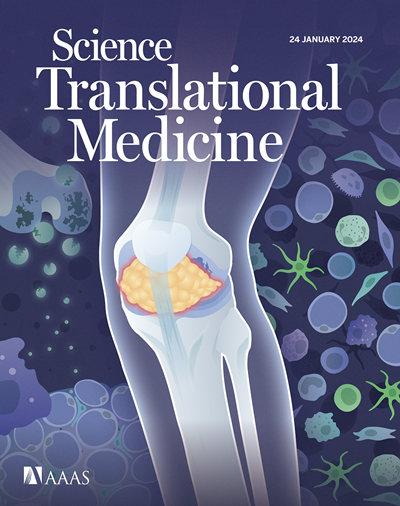Long Covid 的动物模型:"一击即中 "的疾病
IF 15.8
1区 医学
Q1 CELL BIOLOGY
引用次数: 0
摘要
严重急性呼吸系统综合征冠状病毒 2(SARS-CoV 2)大流行已造成全球 700 多万人死亡。尽管存在感染和疫苗诱导的免疫力,SARS-CoV-2 感染仍然是全球健康的一大隐患,因为 SARS-CoV-2 变异体的出现可导致 2019 年严重急性冠状病毒病(COVID-19)或增强 Long Covid 疾病表型。约有5%到10%的SARS-CoV-2感染者会患上长Covid病,这种病与急性冠状病毒病(COVID-19)类似,通常会影响肺部。然而,长Covid也可影响其他外周器官,尤其是大脑。急性疾病表型、长期症状和多个器官系统受累之间的因果关系仍然难以捉摸,因此模拟急性期和急性期后的动物模型系统势在必行。在此,我们回顾了 Long Covid 动物模型的现状,包括当前和未来可能的应用。本文章由计算机程序翻译,如有差异,请以英文原文为准。
Animal models of Long Covid: A hit-and-run disease
The severe acute respiratory syndrome coronavirus 2 (SARS-CoV 2) pandemic has caused more than 7 million deaths globally. Despite the presence of infection- and vaccine-induced immunity, SARS-CoV-2 infections remain a major global health concern because of the emergence of SARS-CoV-2 variants that can cause severe acute coronavirus disease 2019 (COVID-19) or enhance Long Covid disease phenotypes. About 5 to 10% of SARS-CoV-2–infected individuals develop Long Covid, which, similar to acute COVID 19, often affects the lung. However, Long Covid can also affect other peripheral organs, especially the brain. The causal relationships between acute disease phenotypes, long-term symptoms, and involvement of multiple organ systems remain elusive, and animal model systems mimicking both acute and post-acute phases are imperative. Here, we review the current state of Long Covid animal models, including current and possible future applications.
求助全文
通过发布文献求助,成功后即可免费获取论文全文。
去求助
来源期刊

Science Translational Medicine
CELL BIOLOGY-MEDICINE, RESEARCH & EXPERIMENTAL
CiteScore
26.70
自引率
1.20%
发文量
309
审稿时长
1.7 months
期刊介绍:
Science Translational Medicine is an online journal that focuses on publishing research at the intersection of science, engineering, and medicine. The goal of the journal is to promote human health by providing a platform for researchers from various disciplines to communicate their latest advancements in biomedical, translational, and clinical research.
The journal aims to address the slow translation of scientific knowledge into effective treatments and health measures. It publishes articles that fill the knowledge gaps between preclinical research and medical applications, with a focus on accelerating the translation of knowledge into new ways of preventing, diagnosing, and treating human diseases.
The scope of Science Translational Medicine includes various areas such as cardiovascular disease, immunology/vaccines, metabolism/diabetes/obesity, neuroscience/neurology/psychiatry, cancer, infectious diseases, policy, behavior, bioengineering, chemical genomics/drug discovery, imaging, applied physical sciences, medical nanotechnology, drug delivery, biomarkers, gene therapy/regenerative medicine, toxicology and pharmacokinetics, data mining, cell culture, animal and human studies, medical informatics, and other interdisciplinary approaches to medicine.
The target audience of the journal includes researchers and management in academia, government, and the biotechnology and pharmaceutical industries. It is also relevant to physician scientists, regulators, policy makers, investors, business developers, and funding agencies.
 求助内容:
求助内容: 应助结果提醒方式:
应助结果提醒方式:


